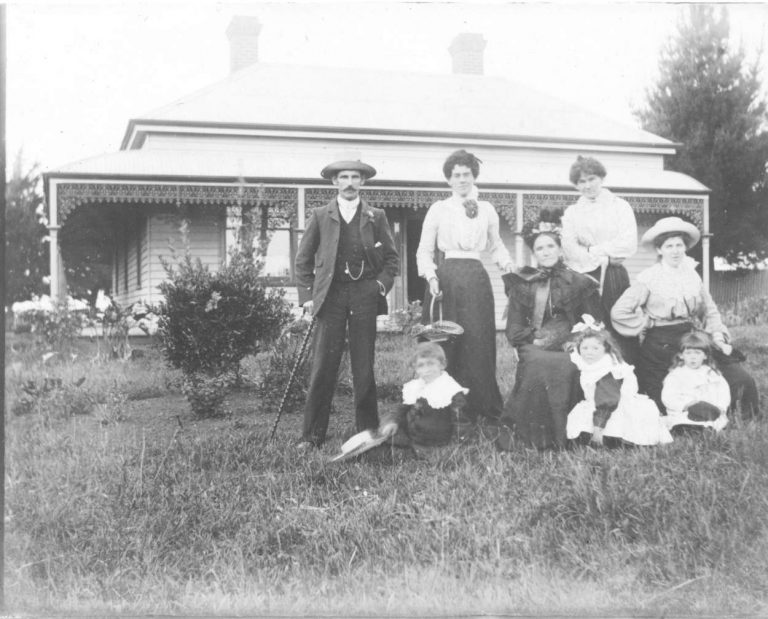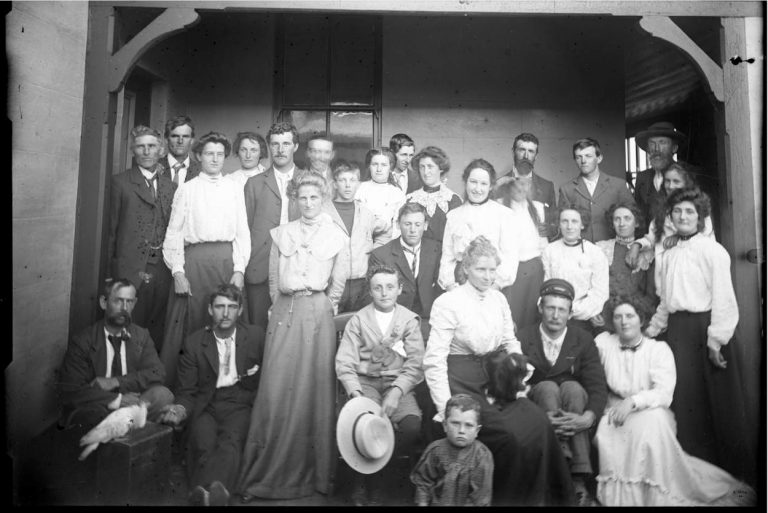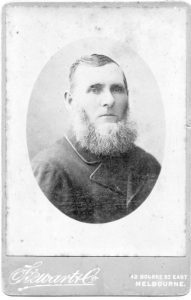In the early 1960s, my father, George Woodfull Stevens (10 Feb 1929 – 28 Dec 2011) began collecting family history materials. He was still collecting in the year before his death. Over the decades, he acquired a multitude of information, back several generations; collaborated with distant relatives on gathering material and organising family reunions; wrote several family histories and biographies; and collected objects, including war medals, 19th century photographs and correspondence from Charles Kingsford Smith and Lester Brain.
On his death, George left several boxes full of papers, photographs, books and objects, some organised into folders by theme, others loose. Over the following years, I have periodically tried to assert some order on the materials. George wrote nearly everything on computer, backed up his files and then lost the discs. Virtually all of the surviving thousands of computer files were named only by a sequential number, giving no clue as to the contents. So I have had to use various software tools to identify the contents and so sort the files by subject. Many other documents – hundreds of pages – survive only as printouts, some in draft form, some in competing final versions with different contents. So I became adept at running stacks of pages through scanners and using OCR (optical character recognition) software to convert the content into searchable text so they can be searched on line.
Then there were the old floppy discs. The 3½″ discs could be read on a cheap USB floppy drive. The 5¼″ discs proved more challenging. But with the FC5025 USB 5.25″ floppy controller from Device Side Data (USA) and some second-hand TEAC drives bought on line, I was able to retrieve the 1986 word processor files (written in Zardax) and reassemble George’s gemmology study guide, which I then lodged with the National Library in Canberra.
File formats proved a problem also. Most were saved in proprietary format (word processing, spreadsheet, database, images, scans), but in most cases I was able to batch-convert them to a variety of common and open-source formats for future readability, using software such as Doxillion. A few proved more resistant, but I was able to find old versions of MS Windows software that I could run under the WINE (“WINE Is Not an Emulator”) emulator and open the files and export them in a standard format. Finally, half a dozen Omnipage scan files were left, but I found someone online who was able to open them and export them in an old version.
George started writing his memoirs … twice. He meticulously planned out all the chapters, completed the first 3 chapters, and then got diverted to other projects. I was able to write the later chapters, which left only the decade before my birth to fill in. My maternal uncle, Robert Martyn, who was around then, has a collection of snippets I found and has said that he’ll write that chapter. I remain hopeful.
George collected much information on his ancestors. He also threw himself into tracing my mother’s ancestry, and my mother, (Nancy) Shirley (née Martyn) (29 Nov 1928 – 10 Jul 2018), also acquired materials from her ancestors, and also wrote up notes. So this Web site holds information on my ancestors on both sides, as well as on other relatives.
This archive is not complete, and it will never be complete. There are many gaps, and much of the material is offered as-is, with no intention of tidying it up or correcting errors. I will continue to add material as I scan it, and I trust that Google’s indexing algorithms will make it all searchable for anyone who is interested. In his notes, George instructed me to hand all of his materials – ultimately filling 5 trunks – to the Australian Archives. I might ultimately do that, although future generations might want to hold onto the family’s objects. But rather than letting George’s decades of work end up locked away (safe but invisible), I decided to scan as much as possible and make it available worldwide. This will take many years. You can expect the content to both change and grow.
Matthew Stevens
Thornleigh, NSW, Australia
June 2019


